Horses are a costly hobby. If you’ve ever looked into buying one, you will find that the purchase price is the least of your worries.
There’re many factors that determine how expensive a horse is and one of the most common is the horse’s breed.
The most expensive horse breeds are usually the Friesian, Thoroughbred, Holsteiner, Selle Francais, and Oldenburg. These high-performance sport horse breeds have impeccable bloodlines and dominate the competitive world of horse sports such as dressage, showjumping, and racing.
With elite competition prospects, they also evaluate how much the horse is expected to earn over his career. Some of these premium horses are worth more than a new car!
We’ll now take an in-depth look into 14 of the most expensive horse breeds look at their stats, history, and what makes them so valuable!
Thoroughbred
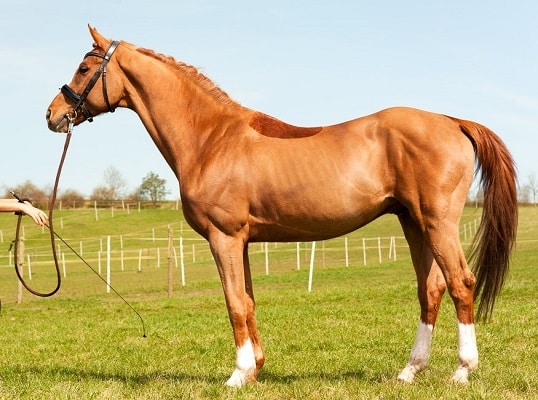
AnnaElizabeth photography / Shutterstock.com
The price of a Thoroughbred can range from $500 for an off-track Thoroughbred to $100,000+ for an elite racehorse. A decent hobby/amateur competition horse usually costs $3,000 – $5,000.
The most expensive horse of all time, Fusaichi Pegasus, is also a Thoroughbred. He sold for a whopping $70 million after winning the Kentucky Derby in 2000!
Top level racehorses can earn their owners a fortune in prize money or through breeding. Hence why it’s not uncommon for these horses to sell for millions on public auctions.
The sprinting greyhounds of the equestrian world, the Thoroughbred breed can be traced back to just 3 founding stallions. These are the Byerley Turk, the Darley Arabian and the Godolphin Arabian.
Originating in England during the 17th and 18th centuries, the breed quickly spread around the world and influenced many modern horse breeds. Besides racing, they’re also extensively used in most other disciplines.
American Standardbred
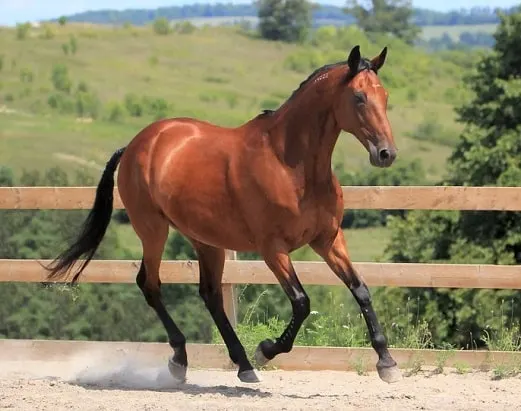
D. Cribbie / Shutterstock.com
The average price of an American Standardbred is under $1,200 for foals and rescues, and up to $8000 for an average ready-to-ride horse.
In 2019, a Standardbred yearling named Maverick was reportedly auctioned for a total of $1.1 million!
Standardbreds are primarily used for harness racing, in which they are the fastest of all horse breeds. However, their conformation and temperament also make them a suitable and versatile riding horse.
Harness racing is especially popular in the United States, where a good trotter is highly valued. Elite trotters can sell for tens of thousands.
The breed’s name derives from the strict “standard” every horse had to meet. This was the ability to trot or pace a mile in less than 2 minutes 30 seconds, although most modern Standardbreds are faster than this.
All modern Standardbreds can be traced back to Thoroughbred stallion Hambletonian 10, whose grandsire was imported to the United States in 1788.
Dutch Warmblood
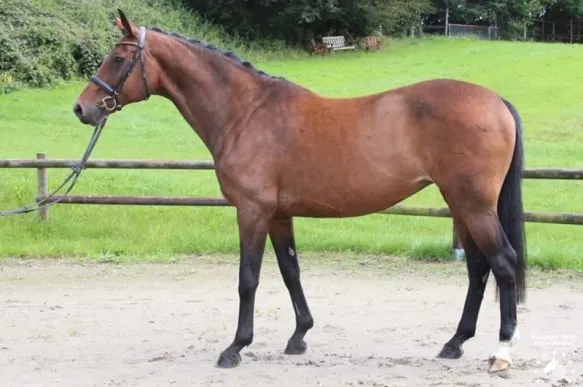
The cost of a Dutch warmblood ranges on average from $6,000 to $15,000. However, for a fully trained competition horse, you can expect to pay anywhere between $15,000 to $50,000.
A champion dressage Dutch Warmblood horse called Totilas sold for $12.8 million and is thought to be the best dressage horse ever lived.
Also known as the KWPN, this premium horse has been purposefully bred for performance since the 1960’s. The Dutch Warmblood was formed when local heavy breeds were crossed with the finer Holsteiner and Hanoverian horses.
Dutch Warmbloods make excellent hunter, jumper and dressage horses. They’re frequently seen at Olympic and Grand Prix events all over the world.
Selle Francais
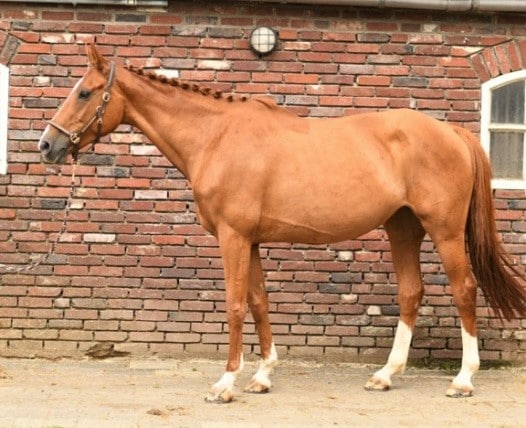
The average price of a Selle Francais horse can range between $15,000 to $50,000. However, it is not uncommon for a top-level Selle Francais to sell for milions of dollars.
in 2013, a Selle Francais show jumping horse called Palloubet D’Halong was sold for a record-breaking $12.8 million, the highest price ever paid for a show jumper!
The Selle Francais was born in 1958 and is the collective name of all French sports horses existing at the time. Interestingly, horses of other breeds can also be registered in the studbook, provided they pass a strictly judged inspection.
Elegant and plainly coloured, these horses are top-notch show jumpers that can fetch their owners some serious prize money. They also excel in the dressage and eventing rings.
Arabian

Tamara Didenko / Shutterstock.com
The cost of an Arabian horse is commonly between $2,500 for youngsters/hobby horses, and up to $10,000 for a well-trained horse. However, some top-level show Arabian horses can sell for well over $100,000.
In 1983, the Canadian and U.S. National Champion Stallion Padron was syndicated as a stud for $11 million!
Easily recognizable after its concave head and banner-like tail carriage, the Arabian is one of the most ancient horse breeds in the world. Originating from the Arabian desert, their hardiness and endurance is second to none.
Arabians dominate the endurance sport and frequently appear in world-class events. They are also popular hobby- and trail horses and perform well in various disciplines.
Andalusian
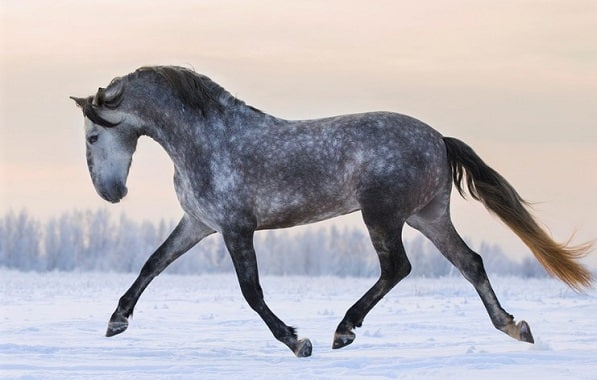
Alexia Khruscheva / Shutterstock.com
An Andalusian can cost from $4,500 for a purebred foal and up to $15,000 to $50,000 for a top-quality breeding/ready to show horse.
Although there isn’t a record of the most expensive Andalusian ever sold, the highest prices are paid for graded stallions of the purest bloodlines.
Also known as P.R.E. or Pure Spanish Horse, the Andalusian is a 500 year-old Iberian breed. These noble horses were often ridden in war by knights and were also favoured by European royalty.
Andalusians have a high affinity for ‘above the air’ dressage and often show off their talent at international horse shows. Traditionally used for bullfighting, the breed’s exceptional bravery, nobility, intelligence and dexterity is admired by many.
Friesian
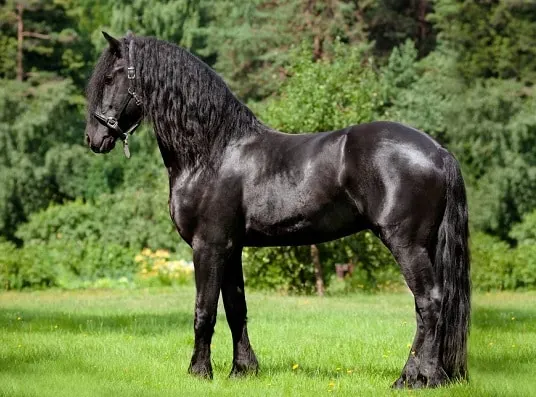
otsphoto / Shutterstock.com
The price of a Friesian horse can range anywhere from $3,000 to $30,000. Since stallions are the most valued part of the breeding stock, a KFPS registered Friesian stallion can cost from $25,000 – $50,000.
One of the main reasons why Friesians are so valuable is because the breed is still recovering from nearly going extinct in the early 20th century. Even today, Friesians are still considered a rare and endangered breed.
Yet another costly Dutch breed, Friesians are always a delightful sight with their raven-black coat and flowing manes and tails. The ancestors of Friesians were extensively used as warhorses in medieval Europe.
Today, Friesians are popular carriage and riding horses and perform particularly well in dressage. They are also often cast to star in historic movies and fantasy dramas.
Quarter Horse
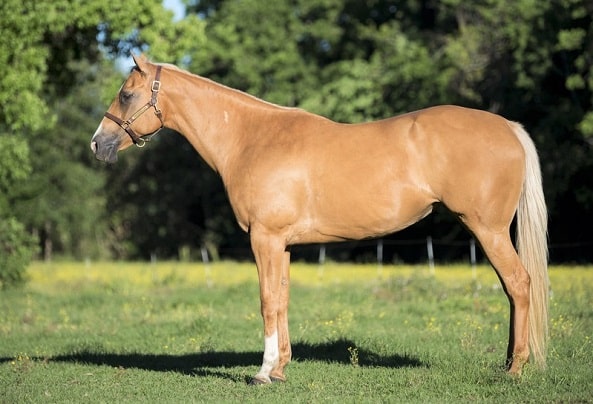
S.M / Shutterstock.com
On average, a Quarter Horse can cost between $3,500 – $10,000 for a hobby horse. Top-level competition Quarter Horses with good breeding can sell for in excess of $20,000.
In 2018, Bobby D. Cox paid the record-breaking price of $2.1 million for the Quarter Horse stallion Moonin The Eagle.
As the name suggests, the American Quarter Horse is well-known for its ability to outrun any other horse breeds over a quarter-mile distance. The breed itself dates back to the 1600s when imported TB stock was crossed with local workhorses in colonial Virginia.
The most popular mount in the United States, the Quarter Horse is one of the most versatile breeds ever created. Its compact, muscular body and famous “cow sense” makes this horse ideal for any sort of ranch work or western riding competition.
On the other hand, Quarter Horses are also used for English riding, driving and pretty much any equestrian activity you can think of!
Also read about the fascinating life and story of Doc Bar, the founding horse of the Quarter horse breed.
Holsteiner
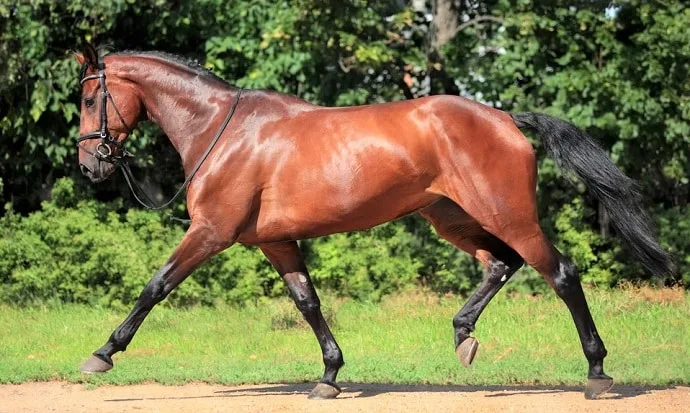
horsemen / Shutterstock.com
On average, the price of a Holsteiner horse can range between $10,000 to $30,000. Most Holsteiners of elite bloodlines and are trained at top competition yards, hence why they are among the most expensive horse breeds in the world.
Holsteiners are a native German breed and are thought to be one of the oldest warmblood breeds, dating as far back as the 13th century. They were developed from small native horses by monks who wanted a good multi-purpose horse suitable for war and agriculture.
Today, the Holsteiner horse dominates the international showjumping circuit and is also found at elite dressage, driving, eventing, and hunter shows.
Sadly, the number of Holsteiner horses has been steadily decreasing over the past few years. Those that do remain are fairly localized to their native region in northern Germany.
Oldenburg
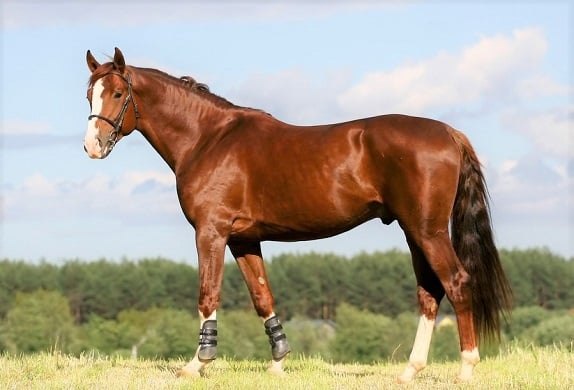
Alexia Khruscheva / Shutterstock.com
The average price for an Oldenburg horse is anywhere between $10,000 to $25,000, and up to $150,000 for top competition horses.
A newsworthy price of $232,600 was paid for an Oldenburg horse called Vivat Rex. The horse was purchased by Dutch bidders at the 89th Fall Elite Auction at the Oldenburg Horse Centre in Vechta.
Oldenburg horses originate from the Oldenburg region in Germany, where they were created from the local farm and carriage horses called the Alt-Oldenburger. They were selectively bred for war and were in high demand in 17th century Europe.
Oldenburger horses excel in dressage, show jumping, and eventing championships which reflects their hefty price tag.
Hanoverian
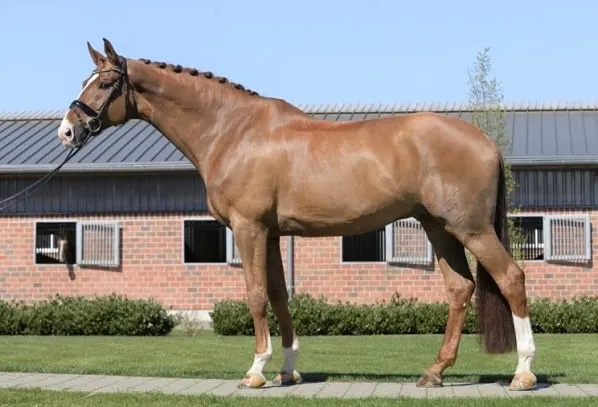
The price for a Hanoverian horse is usually between $4,000 – $7,500. However, like most expensive horse breeds, a top competition prospect will cost well over $15,000.
The record for the most expensive Hanoverian ever sold was set at the 2014 PSI Auction in Ancum, Germany. A Russian couple paid the astronomical price of $3.26 million for Australian bred SPH Dante.
Founded in 18th century Germany, the Hanoverian was originally a well-built farm, carriage, and cavalry horse. The addition of Thoroughbred, Holsteiner, and Cleveland Bay bloodlines have shaped the breed into a lighter, more athletic riding horse.
The Hanoverian is certainly one of the most successful of the warmblood breeds. They have won gold medals on numerous occasions in Olympic dressage, show jumping and eventing.
Trakehner

The cost of a Trakehner horse can range from $5,000-7,500 for a foal and $10,000-$30,000 for an active competition horse.
The most expensive Trakehner stallion, Kattenau, was sold for $314,000 at the 2018 Trakehner Auction.
The Trakehner breed was born at the East Prussian state stud in the mid 18th century. Their light shape is a result of Thoroughbred influence on the small, hardy horses of the locals.
Similarly to its German cousins, the Trakehner breed is a top horse breed in eventing, dressage, and show jumping. Their light build, intelligence, and spectacular endurance has been an advantage when competing against other warmblood breeds.
Gypsy Vanner

arthorse / Shutterstock
On average, the cost of a Gypsy Vanner can range between $3,000 to $6,000. However, because of their rarity in many countries, a fully trained and registered Gypsy Vanner will cost $6,000 to $10,000, or even more.
A licensed stallion with perfect conformation and special coloring could be worth tens of thousands of dollars!
Also known as the Irish Cob or Tinker, this breed was developed by the Romani Travellers of the British Isles. Its official studbook is relatively new and only exists since 1996.
The ancestors of the Gypsy Vanner were mostly Shire and Clydesdale horses. Often colored, they’re real head turners with long, flowing manes and feathers.
Gypsy horses are often shown at traditional horse fairs where they’re traded between breeders. They’re also extremely versatile and can be used for English and Western riding or in harness.
Shire 
 calc(100vw – 40px), 728px” data-pin-media=”https://horseyhooves.com/wp-content/uploads/2020/09/Shire.jpg” data-webp=”true” data-src=”https://horseyhooves.com/wp-content/uploads/2020/09/Shire.jpg” data-srcset=”https://horseyhooves.com/wp-content/uploads/2020/09/Shire.jpg 565w, https://horseyhooves.com/wp-content/uploads/2020/09/Shire-300×213.jpg 300w” data-trellis-processed=”1″ />Marina Kondratenko / Shutterstock.com</p>
<p>The cost of a Shire horse varies from $4,000 to $20,000, depending on age, training, appearance, and breeding.</p>
<p>Shire horses are a rare and endangered breed, which is one of the reasons why they cost more than other expensive breeds. They’re also twice the size of an average horse, which makes their upkeep quite a bit more expensive.</p>
<div class='code-block code-block-2' style='margin: 8px auto; text-align: center; display: block; clear: both;'>
<script async src=)
The Shire horse breed is native to the British Isles with official records dating back to the mid-18th century. It nearly went extinct following the industrial revolution, with numbers dropping from several million to a few thousand.
Shire horses were traditionally used for agriculture and pulling brewery carts. Today, they are employed in forestry work and also by hobby riders and drivers.
While some horses mentioned in this article were sold for a ridiculous amount, most of them didn’t live up to their value. Meaning that price alone is not enough to predict a horse’s future, which makes the game so much more interesting.
source: horseyhooves.com








